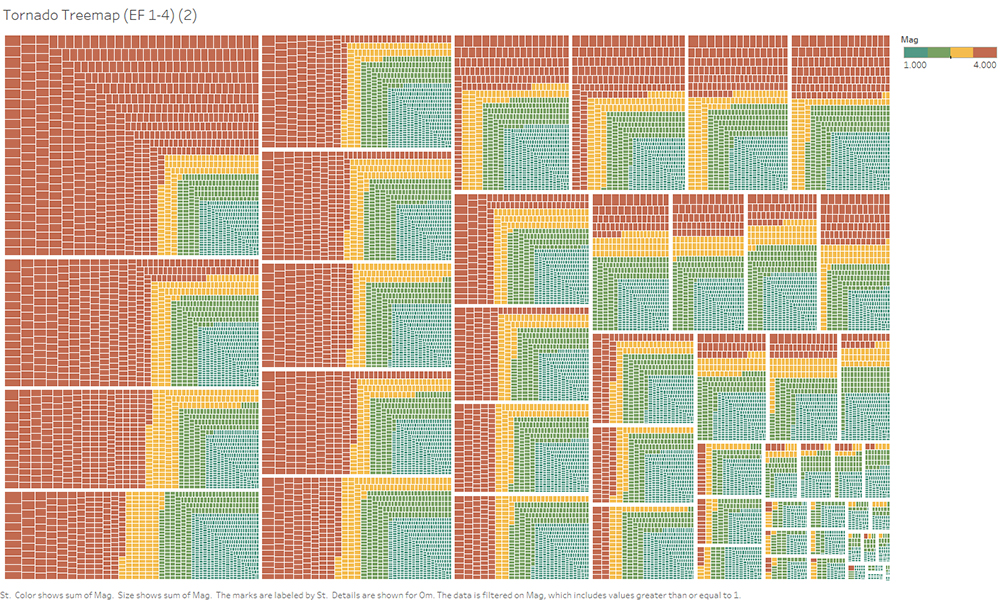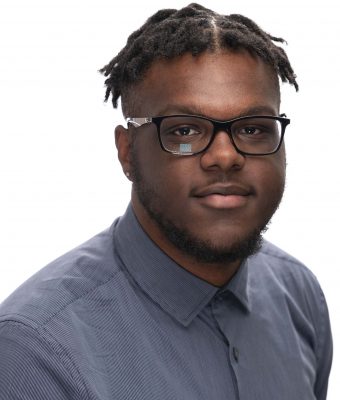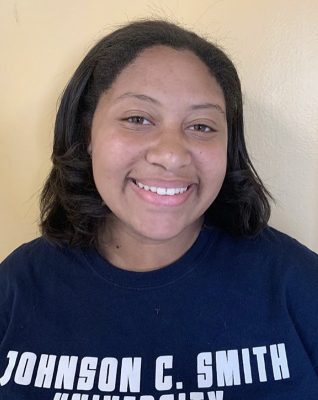
Adrien Simmons’ team used a TreeMap chart to show the frequency and intensity of storms in “Tornado Alley” in the central United States. Image via Adrien Simmons.
By Adrien Simmons and Hannah Anderson
Johnson C. Smith University, as part of a CRC project led by Dr. Ahmed Faik, holds multiple annual summer camps focused on applying STEM knowledge to disaster-related research. Students from this year’s camps – which were held online – reflected on their experiences.

Adrien Simmons
Every year after final exam week, Johnson C. Smith University’s (JCSU) STEM department hosts a 1-week DHS research camp for all STEM majors, supported by the Coastal Resilience Center. It is a unique opportunity to collaborate with fellow students to create a project based around a natural disaster of the group’s choosing. The camp itself is split into morning and afternoon sessions, but the endgame is to collect data, create visualizations using Tableau and then produce a paper and a presentation for fellow students and staff.
For most camp participants, this is their first taste of collaborative work at JCSU. For me, it was an opportunity to polish up some skills that I have learned from my previous times attending. It is always fun to drop into the camp and test how much I’ve grown in comparison to the previous years. This camp was so different from past years because of lockdowns and social distancing orders given by each state, which prevented our groups from meeting physically. That, combined with the fact that I was assigned as a group leader, made me question the outcome this time around.
Despite my fears, the entire process went smoothly. In fact, I could argue that in some ways the camp went better under these circumstances. As a collective, we decided to focus our research on the analysis of tornado alley, which is an area in the Midwest that experiences frequent tornadoes. I assigned each member of my group a subtopic on which to conduct research, collect data, and create Tableau worksheets. Just from the nature of working remotely, I knew that it would require some extra work to keep everything consistent, so I tried my best to fill in the holes where I figured we would lack. That included assigning daily goals, creating templates for the paper and revising our team’s work as needed.
The only major downside to attending the camp remotely was not being physically present to help group members who required hands-on assistance. For example, our group was mostly composed of students who have never done the camp before, so trying to teach them about Tableau or how to search for relevant data proved to be difficult over group chats and Facetime. Either way, we reached the goals we set relatively fast, and in the end, we gave a great presentation.
I learned a lot about myself this time around. Even if the project went surprisingly smoothly, being the one responsible for holding a group accountable for that many tasks and requiring that much effort in a weeks’ time is very difficult, so I thank my group for sticking with me. However, in the end, what I got out of this experience was growth in a scenario where I least expected it, and that in itself made the research camp worth attending.
Adrien Simmons is a senior majoring in Computer Science Information Systems
—————————–

Hannah Anderson
I decided to attend the DHS one-week Research Summer Camp on the recommendation of my professor, Dr. Chakraborty. Throughout my first and second semesters at JCSU, I was engaged and eager to learn about the different opportunities that the Department of STEM had to offer. I excelled in my two rigorous computer programming courses and discovered my passion to continue doing more work related to STEM, specifically in research. When I first heard about this opportunity, it had several things that caught my eye – a STEM focus and the an environment focus, both of which I am interested in and passionate about. I was excited to start and extend my opportunities to research with DHS CRC.
During my research, I worked on and presented a project about hurricanes. Our project, titled “Hurricanes, Typhoons, or Cyclones : An Analysis of Why they Happen,” analyzed the costliest hurricanes and their damage. We compared Hurricane Harvey and Irma’s wind speed and wind pressures to determine the relationship between the two storms, and to compare them to the deadliest hurricanes of all time. During the beginning of this project, we were asked to look at different natural disasters, such as hurricanes, wildfires, tsunamis and earthquakes. I have lived in California my whole life, up until moving away for college, and I have never taken a close look at the different natural disasters that happen in different regions. All that I have ever experienced were earthquakes and wildfires. This project gave me the opportunity to learn and expand my knowledge base in different natural disasters that could potentially happen in North Carolina.
During this project, I learned what hurricanes do to people and communities more in-depth than what the news tells you. Seeing how high the wind speeds can get during hurricanes was shocking to me. I never knew that the wind could reach 190 miles per hour in a Category 5 hurricane. Comparing wind speeds and wind pressure was the most interesting part to me. Having a low wind pressure and high wind speed would determine the category hurricane using the Saffir-Simpson Scale. I was made aware of how much damage hurricanes can do. They cause billions of dollars’ worth of damage and it is truly saddening to see how hurricanes change the lives of the many people who experience them.
The group collaboration was extremely meaningful. Being able to connect and meet peers I have never met before was exciting. This gave me the opportunity to network and solve problems with people who have differing ideas, opinions and backgrounds. Working with a group was educational because it taught my teammates and I how to solve problems and work together despite the distance between us. During my team’s final presentation on Zoom, it was satisfying to see the entirety of our project and present it to our professors and peers. Doing this research remotely was difficult but also incredible to see how as a team we could work together to present something, despite being thousands of miles away.
I did not come into this project thinking I would know how to prepare for a hurricane and what I could expect if I am ever in that unfortunate situation. While working in Tableau for the first time, I learned how to make data visualizations with only a certain amount of data. Using Tableau may help me in the future if I ever need to make a set of data visualizations for other projects or classes. I can use this project and research as whole as experience for different research projects or internships. All in all, this experience was beneficial in many different ways and I am extremely grateful to have worked on this project. Though there were hardships like time zones, my team and I persisted and turned in a valuable project.
Hannah Anderson is a sophomore majoring in Computer Science Information Systems.